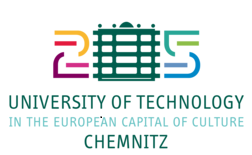Resisting Stigma: Migrant Mothers and the Identity Empowerment of Mixed-Ethnic Children
DOI:
https://doi.org/10.71514/jssal/2025.183Keywords:
Vietnamese marriage migrant mothers, mothering, dual identity, mixed-ethnic children, language learning.Abstract
Vietnamese marriage migrant mothers in Taiwan face stigma, often seen as economically dependent and culturally inferior. This study examines how they counteract stigma and empower their mixed-race children through affirmation, cultural transmission, and self-development. Based on interviews with 36 mothers, the findings show they boost their mixed-ethnic children's self-esteem, preserve heritage through language, and pursue education to challenge stereotypes. Despite Taiwan's New Southbound Policy promoting multiculturalism, structural discrimination persists. The study calls for policies that enhance migrant mothers' social mobility, support bilingual education, and promote inclusive narratives of Southeast Asian heritage in Taiwan’s multicultural discourse.
Downloads
References
Bourdieu, P. (2018). The forms of capital. In The sociology of economic life (pp. 78-92). Routledge.
Braun, V., & Clarke, V. (2006). Using thematic analysis in psychology. Qualitative research in psychology, 3(2), 77-101. DOI: https://doi.org/10.1191/1478088706qp063oa
Bronfenbrenner, U. (1979). The ecology of human development: Experiments by nature and design. Harvard university press.
Childs, E. C., Lyons, A., & Jones, S. L. (2021). Migrating mixedness: Exploring mixed identity development in New York City. Journal of Ethnic and Migration Studies, 47(4), 782-801. DOI: https://doi.org/10.1080/1369183X.2019.1654153
Chin, J. & Yu, S. (2008). School adjustment among children of immigrant mothers in Taiwan. Social Behavior and Personality: an international journal, Volume 36, Number 8, 2008, 1141-1152. DOI: https://doi.org/10.2224/sbp.2008.36.8.1141
Choi, Y., He, M., & Harachi, T. W. (2008). Intergenerational cultural dissonance, parent–child conflict and bonding, and youth problem behaviors among Vietnamese and Cambodian immigrant families. Journal of youth and adolescence, 37, 85-96. DOI: https://doi.org/10.1007/s10964-007-9217-z
Darvin, R., & Norton, B. (2014). Transnational identity and migrant language learners: The promise of digital storytelling. Education Matters: The Journal of Teaching and Learning, 2(1).
Deaux, K., & Ethier, K. A. (1998). Negotiating social identity. In Prejudice (pp. 301-323). Academic Press. DOI: https://doi.org/10.1016/B978-012679130-3/50049-1
Feliciano, C., & Rumbaut, R. G. (2018). Varieties of ethnic self-identities: Children of immigrants in middle adulthood. RSF: The Russell Sage Foundation Journal of the Social Sciences, 4(5), 26-46. DOI: https://doi.org/10.7758/RSF.2018.4.5.02
Fuligni, A. J., & Tsai, K. M. (2015). Developmental flexibility in the age of globalization: Autonomy and identity development among immigrant adolescents. Annual review of psychology, 66(1), 411-431. DOI: https://doi.org/10.1146/annurev-psych-010814-015111
Gaviria, P. R., Cardoso, F., Scaraboto, D., & De Araujo Gil, L. (2020). Motherhood in migration: schools as acculturation agents. In Gender After Gender in Consumer Culture (pp. 77-99). Routledge.
Hamari, L., Konttila, J., Merikukka, M., Tuomikoski, A. M., Kouvonen, P., & Kurki, M. (2022). Parent support programmes for families who are immigrants: A scoping review. Journal of immigrant and minority health, 24(2), 506-525. DOI: https://doi.org/10.1007/s10903-021-01181-z
Harris, K. (2019). Transnational Parenting and Cultural Capital: A qualitative study on cultural capital and parenting strategies of English-speaking migrants in Sweden.
Hsia, H. C. (2004). Prospects and impasse of multicultural citizenship in globalization era: the case of immigrants movement in Taiwan. http://gb. net4p. com/gate/gb/politics. soc. ntu. edu. tw/news/4-3% 20Hsia% 20Hsiaochuan. pdf.
Hsia, H. C. (2007). Imaged and imagined threat to the nation: the media construction of the ‘foreign brides' phenomenon’as social problems in Taiwan. Inter‐Asia Cultural Studies, 8(1), 55-85. DOI: https://doi.org/10.1080/14649370601119006
Hsieh, S. C. Y., & Wang, M. C. Y. (2008). Immigrant wives and their cultural influence in Taiwan. 師大學報: 人文與社會科學類, 53(2), 101-118. DOI: https://doi.org/10.6210/JNTNULL.2008.53(2).07
Huang, I. C. (2021). The Southeast Asian languages policy in Taiwan: the linguistic and nonlinguistic goals. Journal of Multilingual and Multicultural Development, 1-13. DOI: https://doi.org/10.1080/01434632.2021.1892704
Kabeer, N. (2005). Gender equality and women's empowerment: A critical analysis of the third millennium development goal 1. Gender & development, 13(1), 13-24. DOI: https://doi.org/10.1080/13552070512331332273
Kim, P. Y., & Lee, D. (2014). Internalized model minority myth, Asian values, and help-seeking attitudes among Asian American students. Cultural Diversity & Ethnic Minority Psychology, 20(1), 98. DOI: https://doi.org/10.1037/a0033351
Lan, P. C. (2008). Migrant women’s bodies as boundary markers: Reproductive crisis and sexual control in the ethnic frontiers of Taiwan. Signs: Journal of Women in Culture and Society, 33(4), 833-861. DOI: https://doi.org/10.1086/528876
Lan, P. C. (2019). From reproductive assimilation to neoliberal multiculturalism: Framing and regulating immigrant mothers and children in Taiwan. Journal of Intercultural Studies, 40(3), 318-333. DOI: https://doi.org/10.1080/07256868.2019.1598952
Le Anh Huynh, H., & Quoc Huynh, T. (2020). Negotiating with intimacy: Being a good Vietnamese mother in Taiwan. Asian Journal of Women's Studies, 26(4), 543-559. DOI: https://doi.org/10.1080/12259276.2020.1859172
Le Espiritu, Y. (2001). "We don't sleep around like white girls do": Family, culture, and gender in Filipina American lives. Signs: Journal of Women in Culture and Society, 26(2), 415-440. DOI: https://doi.org/10.1086/495599
Lee, J., & Zhou, M. (2015). The asian American achievement paradox. Russell Sage Foundation.
Lee, M. H., & Chueh, H. C. (2018). The image of the “New Second Generation” in Taiwan’s mainstream newspapers. Communication, Culture and Politics, 7, 133-174.
Louie, V. (2012). Keeping the immigrant bargain: The costs and rewards of success in America. Russell Sage Foundation.
Maxwell, J. A. (2013). Qualitative research design: An interactive approach: An interactive approach. sage.
Ming, H. H. (2013). The education of migrant children and China's future: The urban left behind. Routledge. DOI: https://doi.org/10.4324/9780203097786
Ministry of the Interior National Immigration Agency (11/2024): https://www.immigration.gov.tw/5385/7344/7350/8887/?alias=settledown
Nguyen, H. T. (2015). Higher education in Vietnam: flexibility, mobility and practicality in the global knowledge economy. DOI: https://doi.org/10.1057/9781137436481
O’Donoghue, M. (2004). Racial and ethnic identity development in white mothers of biracial, black-white children. Affilia, 19(1), 68-84. DOI: https://doi.org/10.1177/0886109903260795
Park, I. J., Du, H., Wang, L., Williams, D. R., & Alegría, M. (2020). The role of parents’ ethnic-racial socialization practices in the discrimination–depression link among Mexican-origin adolescents. Journal of Clinical Child & Adolescent Psychology. DOI: https://doi.org/10.1080/15374416.2018.1547969
Park, S. M., & Sarkar, M. (2007). Parents’ attitudes toward heritage language maintenance for their children and their efforts to help their children maintain the heritage language: A case study of Korean-Canadian immigrants. Language, culture and curriculum, 20(3), 223-235. DOI: https://doi.org/10.2167/lcc337.0
Parreñas, R. S. (2005). Children of Global Migration: Transnational Families and Gendered Woes. Stanford University Press
Patton, M. Q. (2014). Qualitative research & evaluation methods: Integrating theory and practice. Sage publications.
Phenice, L. A., & Griffore, R. J. (2000). Social identity of ethnic minority families: An ecological approach for the new millennium. Michigan Family Review, 5(1). DOI: http://dx.doi.org/10.3998/mfr.4919087.0005.103
Phinney, J. S. (2013). Ethnic identity in adolescents and adults: Review of research. Readings in ethnic psychology, 73-99.
Pineau, M. G., & Waters, M. C. (Eds.). (2016). The integration of immigrants into American society. National Academies Press.
Portes, A., & Zhou, M. (2012). The new second generation: Segmented assimilation and its variants. In The new immigration(pp. 85-102). Routledge. DOI: https://doi.org/10.1177/0002716293530001006
Qin, D. B., Way, N., & Mukherjee, P. (2008). The other side of the model minority story: The familial and peer challenges faced by Chinese American adolescents. Youth & Society, 39(4), 480-506. DOI: https://doi.org/10.1177/0044118X08314233
Seider, S., Huguley, J., McCobb, E., Titchner, D., Ward, K., Xu, H., & Zheng, Y. (2023). How parents in multiethnic-racial families share cultural assets with their children. Race and Social Problems, 15(1), 5-18. DOI: https://doi.org/10.1007/s12552-022-09384-1
Sue, S., & Okazaki, S. (2022). Asian-American educational achievements: A phenomenon in search of an explanation. In The New Immigrants and American Schools (pp. 297-304). Routledge.
Tajfel, H. (1979). An integrative theory of intergroup conflict. The social psychology of intergroup relations/Brooks/Cole.
Toppelberg, C. O., & Collins, B. A. (2010). Language, culture, and adaptation in immigrant children. Child and Adolescent Psychiatric Clinics, 19(4), 697-717. DOI: https://doi.org/10.1016/j.chc.2010.07.003
Wang, H. Z., & Bélanger, D. (2008). Taiwanizing female immigrant spouses and materializing differential citizenship. Citizenship studies, 12(1), 91-106. DOI: https://doi.org/10.1080/13621020701794224
Wang, Y., Zhang, Y., & Wadsworth, H. (2023). Family and peer ethnic‐racial socialization in adolescents' everyday life: A daily transactional model with ethnic‐racial identity and discrimination. Child Development, 94(6), 1566-1580. DOI: https://doi.org/10.1111/cdev.13937
Yang, H. J., Kuo, Y. J., Wang, L., & Yang, C. Y. (2014). Culture, parenting, and child behavioral problems: A comparative study of cross-cultural immigrant families and native-born families in Taiwan. Transcultural psychiatry, 51(4), 526-544. DOI: https://doi.org/10.1177/1363461514532306
Yeh, Y. C., Ho, H. J., & Chen, M. C. (2015). Learning Vietnamese as a heritage language in Taiwan. Journal of Multilingual and Multicultural Development, 36(3), 255-265. DOI: https://doi.org/10.1080/01434632.2014.912284
Yip, T. (2018). Ethnic/racial identity—A double-edged sword? Associations with discrimination and psychological outcomes. Current directions in psychological science, 27(3), 170-175. DOI: https://doi.org/10.1177/0963721417739348
Zhou, J., Zhou, J., Zhang, H., & Zhang, J. (2022). Social integration as mediator and age as moderator in social capital affecting mental health of internal migrant workers: a multi-group structural equation modeling approach. Frontiers in Public Health, 10, 865061. DOI: https://doi.org/10.3389/fpubh.2022.865061
Zhou, M. (1998). Growing up American: How Vietnamese children adapt to life in the United States. Russell Sage Foundation.
Downloads
Published
How to Cite
Issue
Section
License
Copyright (c) 2026 Huy Huynh Le Anh

This work is licensed under a Creative Commons Attribution 4.0 International License.
The work is made available under the terms of the Public Offer and the Creative Commons Attribution 4.0 International License (CC BY 4.0). This license allows anyone to reproduce, distribute, and adapt the material in any medium or format, including for commercial purposes, provided that proper credit is given to the creator(s) and the original source.











